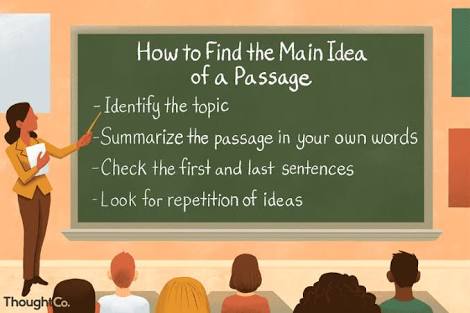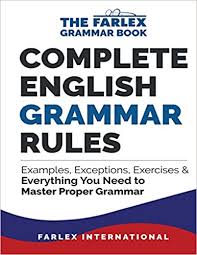How To Answer Summary Questions.
 |
| How to answer summary questions. |
Many people think that answering summary questions is easy so they answer summary questions anyhow. The summary question alone stands for 30% of your grade in Paper 2. Therefore it is not much of a stretch to claim that being able to answer summary questions well will give you a huge advantage in your Comprehension paper.
Fortunately, the skills required for summary are not difficult to master.
While the process may seem a little laborious at first glance, the more you practice them the easier it gets. Eventually you’ll be able to complete them almost instinctively.
Here are the 4 Steps to answering any summary question.
Step 1: Reading the Question
There are 2 very important things you MUST take note of before you begin writing your summary.
Identify EXACTLY what the question wants.
Take note of the paragraphs from which you are tasked to identify your points from
The first requires you to take note of key terms and understand question words.
Second Step
This requires no more than a couple of seconds to check but is often the most common careless mistake that students make. It may seem implausible for one to miss such an obvious instruction but it has happened too many times for you to brush it off. So double check the paragraphs you are allowed to get your points from. Identify the relevant answers from the passage
When identifying answers from comprehension passages there are a few rules we normally follow:
Onlyy select key ideas
Leave out examples
Leave out adjectives and adverbs
That is true for most questions unless they specifically ask you for examples.
Underline (or highlight if you are allowed to) the points from the relevant paragraphs and write a quick word or two (noting) in the margin about each point so that you will take less time sorting them out later.
Sort your answers in the sequence you would present them (or as required by the question).
Group any answers that are similar or belong to the same category in order to reduce the number of words used. For example:
He returned home to shower and had a sandwich after that. But it wasn’t until he finished his homework that he realised he left his basketball in school.
The three bolded points all have one thing in common: they are all things he did before he realised he left his basketball in school. You can group them into one sentence when summarising them: He bathed, ate, and completed his assignments before realising he left his basketball in school.
!Tip: While you are only required to identify 8 points, identify 10 points instead. This leaves room for errors and there will be a higher probability of getting the right answers. Scoring the goal 8 out of 10 times is easier than 8 out of 8 times.
Step 2: Identify the key words in the answers.
While your language grade in the summary is determined by your choice of vocabulary and grammar, the content grade is determined by the number of key words you managed to identify.
On top of that, the key words are the words that you cannot lift directly from the passage (unless it is a technical jargon like photosynthesis or cold fusion).
It is therefore crucial that you identify the key words before you start writing your summary. Once you’ve had enough practice, you can actually complete this step together with Step 1. However, it is not recommended that you attempt to do so right from the start without practice.
Step 3: Change the key words.
When answering the summary question it is recommended that you use your own words as much as possible. But it is impossible to change everything. The key words and phrases, however, have to be changed. For example:
Q: What did Ade do at night?
Passage: “Ade ate a cake before she went to bed.”
The words ‘cake’ and ‘Ade’ are almost impossible to change. In most cases, proper nouns (Ade) do not have to be changed. Common nouns (cake) may be changed but most of the time this isn’t necessary.
Important Note: DO NOT force yourself to change common nouns. Unless there happens to be another alternative name, attempts to change common nouns usually end up fairly ridiculous. (Someone once changed ‘bird’ to ‘flying mammal’. You DO NOT want to do that.)
The question asks for what Sally did at night, therefore the key words we are looking for are most likely verbs (action words). In this case, they are ‘ate’ and ‘went to bed’. You should try your best to change these words.
Sally retired to bed/went to sleep/slept after consuming a cake.
!Tip: Try to rephrase each point you’ve identified under 6 words. This will make it easier for you when combining the points together.
Step 4: Writing your answer
You have identified the answers, collated and categorised them, and changed the key words. Now all you have to do is to write everything down.
The grid method
This is something that most students are taught in schools today. While it makes for some rather awkward marking, it is common enough for teachers to accept seeing it.
What you do is basically draw grids on your paper to make counting the number of words used a breeze.
Writing in the grid would look something like this:
Draw an 8 by 10 table on your paper and simply multiply the rows by columns to obtain your word count. It also means you can easily check your word quota while you are writing.
BONUS Step: Check your writing for mistakes
This is a step many forget or simply do not have time to go through. Once you’ve familiarise d yourself with the various steps for summary it should speed up your process and leave you enough time to look through your final answer at least once.


Thank you for this, summary has always been one of my weakest points in English.
ReplyDeleteI love this, summary has always been a difficult for me.
ReplyDeleteNice tips
ReplyDeleteSummary is not a problem for me!
ReplyDeleteI know how to solve summary questions now
ReplyDelete